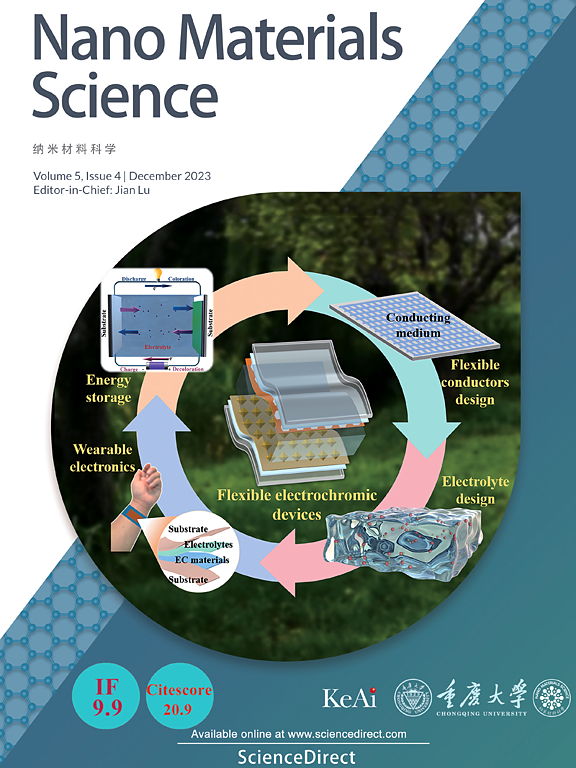Construction of gradient hierarchical and hetero-interfaces structure for ultra-broad microwave absorption
IF 17.9
2区 材料科学
Q1 Engineering
引用次数: 0
Abstract
Currently, carbon materials derived from biomass are widely sought after as electromagnetic absorbing(EMWA) materials owing to the unique structure, as well as the wide range of natural acquisition pathways, economic viability, and simple processing. However, due to the high dielectric properties, mismatched impedance and single attenuation mechanism, they cannot achieve efficient EMWA performance. Herein, the biomass carbon/Co/porous carbon magnetic composites with a layered gradient structure were fabricated by in-situ deposition of ZIF-67 on the lotus leaf base and then pyrolysis at high temperature. By adjusting the pyrolysis temperature, the sample obtained at 650 °C achieved a minimum reflection value (RLmin) of −34.2 dB at a matching thickness of 2.6 mm, and a maximum effective absorption bandwidth (EAB) of 7.12 GHz. The results indicate that this magnetic composite with a multi-sized layered gradient porous structure has a good electron transport network, a large number of heterogeneous interfaces, and dipole polarization centers, which are conducive to multiple reflection and scattering of microwaves, conduction loss, interface loss, magnetic loss, and impedance matching of materials. Therefore, this work provided a reference for optimizing the EMWA performance of carbon materials and designing a layered gradient porous magnetic composite with multi-sized structure.
超宽微波吸收梯度分层异质界面结构的构建
目前,生物质碳材料因其结构独特、自然获取途径广泛、经济可行、加工简单等优点,作为电磁吸收(EMWA)材料受到广泛追捧。但由于介电性能高、阻抗不匹配、衰减机制单一,无法实现高效的EMWA性能。本文通过在荷叶基底上原位沉积ZIF-67,并进行高温热解,制备了具有层状梯度结构的生物质碳/Co/多孔碳磁性复合材料。通过调节热解温度,650℃下得到的样品在匹配厚度为2.6 mm时的最小反射值(RLmin)为−34.2 dB,最大有效吸收带宽(EAB)为7.12 GHz。结果表明,这种多层梯度多孔结构的磁性复合材料具有良好的电子输运网络、大量的非均相界面和偶极极化中心,有利于微波的多次反射和散射、导电损耗、界面损耗、磁损耗和材料的阻抗匹配。因此,本研究为优化碳材料的EMWA性能,设计多层梯度多孔磁性复合材料提供了参考。
本文章由计算机程序翻译,如有差异,请以英文原文为准。
求助全文
约1分钟内获得全文
求助全文
来源期刊

Nano Materials Science
Engineering-Mechanics of Materials
CiteScore
20.90
自引率
3.00%
发文量
294
审稿时长
9 weeks
期刊介绍:
Nano Materials Science (NMS) is an international and interdisciplinary, open access, scholarly journal. NMS publishes peer-reviewed original articles and reviews on nanoscale material science and nanometer devices, with topics encompassing preparation and processing; high-throughput characterization; material performance evaluation and application of material characteristics such as the microstructure and properties of one-dimensional, two-dimensional, and three-dimensional nanostructured and nanofunctional materials; design, preparation, and processing techniques; and performance evaluation technology and nanometer device applications.
 求助内容:
求助内容: 应助结果提醒方式:
应助结果提醒方式:


